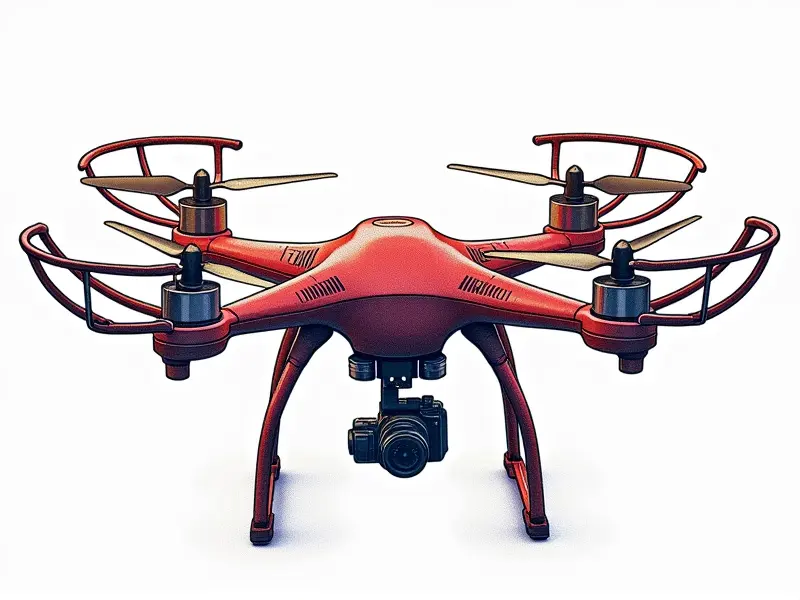RC helicopter training routines

Master Your RC Helicopter in 7 Days
Welcome to the ultimate guide for mastering your remote control (RC) helicopter. Whether you're a complete beginner or looking to refine your skills, this comprehensive article will help you achieve proficiency in just one week.
Top RC Helicopter Training Tips for Beginners
- Start Indoors: Begin by flying indoors where there is less wind and fewer obstacles. This helps build confidence without the risk of losing your helicopter.
- Understand Basic Controls: Before taking off, familiarize yourself with the throttle, pitch, yaw, and roll controls. Practice these individually to get a feel for how each control affects the helicopter's movement.
- Use Training Gear: Invest in training gear such as a simulator or a beginner-friendly trainer model that is more stable and easier to handle.
Nighttime Flight Tips for RC Helicopters
Flying at night can be an exhilarating experience, but it requires special considerations:
- Lighting: Ensure your helicopter is equipped with LED lights to increase visibility. Use a headlamp or flashlight to illuminate the area around you.
- Safety First: Always fly in a well-lit and open space, avoiding trees, buildings, and other obstacles that could cause damage.
- Battery Management: Night flights can drain batteries faster due to lower temperatures. Keep extra batteries charged and ready for use.
Daily Drills for Expert RC Heli Control
To become an expert, daily practice is essential:
- Hover Practice: Spend at least 15 minutes each day hovering your helicopter. Focus on maintaining a steady altitude and correcting any drift.
- Maneuver Drills: Incorporate maneuvers such as forward flight, backward flight, and side-to-side movement into your routine. Start slow and gradually increase the difficulty.
- Landing Techniques: Practice smooth landings by aiming for a specific spot on the ground or landing pad. This will improve your precision and control over time.
Beginner's Guide to RC Helicopter Practice
If you're new to flying RC helicopters, here are some key steps:
- Learn Basic Maneuvers: Start with simple maneuvers like hovering and moving in straight lines. As you gain confidence, move on to more complex moves.
- Practice Regularly: Consistency is the key to improvement. Set aside time each day for practice sessions.
- Seek Feedback: Join online forums or local clubs where experienced pilots can provide guidance and feedback on your flying techniques.
Essential RC Heli Maneuvers Explained
Mastery of these maneuvers will elevate your skills to the next level:
- Hovers: The ability to maintain a steady hover is fundamental. Practice adjusting pitch and throttle to keep the helicopter stable.
- Forward Flight: Learn how to transition smoothly from hovering to forward flight, maintaining control throughout the maneuver.
- Backward Flight: Mastering backward flight requires precise coordination of controls. Start slowly and gradually increase speed.
Perfect Your Hover with These Tricks
Hovering is one of the most challenging aspects of RC helicopter flying, but it's also crucial for developing control:
- Slight Adjustments: Make small adjustments to pitch and throttle rather than large ones. This helps maintain stability.
- Precision Landings: Practice hovering over a specific point on the ground or landing pad, aiming for accuracy with each attempt.
- Wind Conditions: Learn how different wind conditions affect your helicopter's flight and practice adjusting controls accordingly.
RC Helicopter Training: From Novice to Pro
The journey from novice to pro is a gradual process, but with dedication and consistent practice, you can achieve mastery:
- Set Realistic Goals: Define your goals for each training session. Whether it's improving hover time or mastering a new maneuver, having clear objectives will keep you motivated.
- Analyze Your Flights: Review recordings of your flights to identify areas for improvement. Look at how you handle different situations and make adjustments accordingly.
- Stay Updated: Keep up with the latest advancements in RC technology and techniques. Attend workshops, read articles, and watch tutorials to stay informed.
Quick Start Guide to RC Helicopter Flying
If you're just starting out, follow these steps for a smooth introduction:
- Assemble Your Helicopter: Carefully read the manual and assemble your helicopter according to instructions.
- Battery Charging: Charge all batteries fully before your first flight. Ensure you have enough spare batteries for extended practice sessions.
- Fly Indoors First: Start by flying indoors where there is less wind and fewer obstacles. This will help build confidence without the risk of losing your helicopter.
RC Helicopter Drills for Smooth Landings
Smooth landings are a hallmark of skilled pilots. Here’s how to perfect them:
- Select Landing Spots: Choose flat, open areas with minimal wind disturbance for landing practice.
- Approach Slowly: Approach the landing spot slowly and steadily. Gradually reduce throttle while maintaining pitch control.
- Hover Before Touchdown: Hover just above the ground before making contact to ensure a gentle touchdown.

